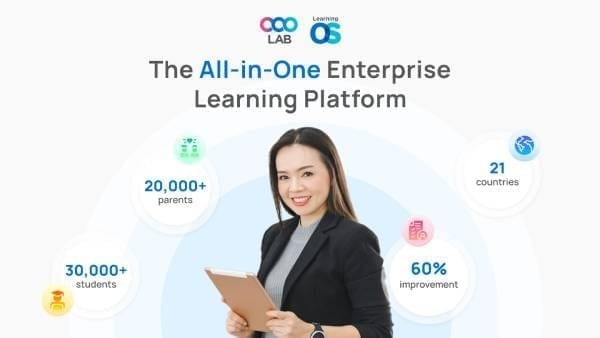

In today’s fast-paced business landscape, organizations are constantly seeking innovative ways to enhance employee training, engagement, and development. Traditional learning and development (L&D) programs often struggle to keep up with the evolving needs of a modern workforce that demands more interactive, engaging, and personalized learning experiences. Enter "gamification" and **social learning**—two powerful strategies that are transforming the way enterprises approach learning management systems (LMS). When effectively integrated into an Enterprise LMS, these strategies can significantly boost employee motivation, engagement, and knowledge retention, ultimately driving better business outcomes.
"Gamification" refers to the application of game-like elements—such as points, badges, leaderboards, challenges, and rewards—into non-game environments like corporate training programs. In the context of an Enterprise LMS, gamification leverages these mechanics to make learning more engaging and motivating for employees.
Gamification taps into fundamental human psychology, appealing to our intrinsic motivations like competition, achievement, and the desire for recognition. When learners receive immediate feedback in the form of points or badges, it triggers a sense of accomplishment, encouraging them to continue progressing through the course. Leaderboards further enhance this effect by fostering a healthy sense of competition among peers.
Traditional training programs often feel monotonous, especially when delivered through long, text-heavy courses. Gamification transforms this experience by introducing elements of fun, interactivity, and competition. Employees are more likely to stay engaged with training materials if they know there’s a reward at the end or if they can see their progress visually represented on a leaderboard.
The interactive nature of gamified learning promotes better knowledge retention. When learners actively engage with content, whether through quizzes, simulations, or challenges, they’re more likely to absorb and remember the information. This is particularly important in corporate environments, where retaining critical knowledge can directly impact job performance.
Gamification encourages employees to view learning as a continuous process rather than a one-time event. With mechanisms like reward systems and progression tracking, employees are more motivated to return to the LMS to unlock new achievements, leading to ongoing skill development.
>>> Read more: Common challenges when implementing an Enterprise LMS
>>> Read more: Steps to implement an Enterprise LMS
>>> Read more: Enterprise LMS - revolutionzing corporate training and development
>>> Read more: What is hybrid learning?
>>> Read more: Customization options for Enterprise LMS
Book Free Demo with us. Bring your Training and Learning to a new height with LearningOS.
"Social learning" is a model that emphasizes learning through interaction, collaboration, and observation. Unlike formal learning methods that rely on structured courses, social learning thrives on informal exchanges of knowledge and ideas within a community. In an Enterprise LMS, social learning can be facilitated through discussion forums, peer-to-peer collaboration tools, and social media-like features.
Social learning is rooted in the idea that we learn more effectively when we interact with others. In the workplace, this interaction can take the form of discussions with colleagues, sharing best practices, or collaborating on projects. By incorporating social learning into an LMS, organizations create a learning environment where employees can actively engage with one another, share insights, and learn from collective experiences.
One of the key benefits of social learning is the ability to share knowledge across teams and departments. In many organizations, valuable knowledge often resides in silos, with employees working in isolation. Social learning tools within an LMS—such as discussion boards, wikis, and collaborative workspaces—break down these silos by enabling employees to share their expertise with others.
Social learning fosters a sense of community within the organization. Employees feel more connected when they can interact with their peers, ask questions, and collaborate on solving problems. This sense of belonging can lead to higher levels of engagement and motivation, as employees feel like they’re part of a supportive learning network.
In a social learning environment, feedback doesn’t just come from instructors or managers; it comes from peers as well. When employees receive recognition or constructive feedback from their colleagues, it can boost their confidence and encourage them to engage more deeply with the learning material. This peer-to-peer feedback loop can create a more dynamic and responsive learning culture within the organization.
While gamification and social learning are powerful strategies on their own, their true potential is unlocked when they’re combined in an Enterprise LMS. Together, they create a learning ecosystem that is both engaging and collaborative, offering employees a more immersive and interactive learning experience.
Gamification and social learning naturally complement each other when it comes to fostering engagement. For instance, when learners can see how their peers are performing on a leaderboard, it adds a social dimension to the competition. Employees may be more motivated to complete courses and achieve higher scores when they know their colleagues are watching and competing with them.
Gamification doesn’t have to be a solitary experience. Enterprise LMS platforms can incorporate team-based challenges where employees work together to achieve a common goal, combining their knowledge and skills. These collaborative challenges promote teamwork and peer learning while keeping employees motivated through game-like mechanics.
A key element of gamification is the use of rewards and recognition. In a social learning environment, these rewards can take on new meaning when they’re tied to peer recognition. For example, badges and achievements can be shared publicly within the LMS, allowing employees to celebrate each other’s accomplishments. This social recognition can further enhance motivation and foster a culture of learning and achievement within the organization.
Both gamification and social learning emphasize feedback as a critical component of the learning process. Gamification provides instant feedback through points and badges, while social learning encourages more in-depth feedback through peer interactions and discussions. When combined, these two approaches create a feedback-rich environment where employees are constantly learning and improving.
While the benefits of gamification and social learning are clear, successful implementation requires careful planning and execution. Here are a few key steps organizations should take to integrate these strategies into their Enterprise LMS:
Not all employees will respond to the same gamification techniques or social learning tools. It’s important to understand the preferences and motivations of your workforce before designing your LMS experience. For example, some employees may be motivated by competition, while others may prefer collaborative learning experiences.
Begin by introducing simple gamification elements, such as badges for completing courses or leaderboards to track progress. Similarly, start with basic social learning tools like discussion forums, and gradually introduce more advanced features like collaborative workspaces or peer mentoring programs.
To maximize the impact of gamification and social learning, make sure they align with your organization’s broader business goals. For instance, if your goal is to improve customer service, design gamified learning modules and social learning communities around customer service skills.
Use data and analytics to measure the effectiveness of your gamification and social learning initiatives. Track metrics like course completion rates, employee engagement levels, and knowledge retention, and use this data to refine your LMS strategy over time.

Book Free Demo with us. Bring your Training and Learning to a new height with LearningOS.
Incorporating gamification and social learning into an Enterprise LMS has the potential to revolutionize the way organizations approach employee training and development. By making learning more engaging, interactive, and collaborative, these strategies can help create a more motivated and skilled workforce, ultimately driving better business results. As organizations continue to prioritize employee development, the combination of gamification and social learning will be key to creating learning experiences that resonate with the modern learner.
At OOOLAB (pronounced 'uːlæb'), our mission is to make complex learning operations simple. We aim to positively impact the lives of over 1,000,000 learners and educators by the end of 2026.
OOOLAB's LearningOS provides educational institutions and corporate enterprises with an all-in-one solution to create and deliver engaging learning experiences.
We meet organizations' needs or support your growth. We provide undivided attention. We provide
Reach out to us at: Linkedin, FaceBook
FAQ
What are the main benefits of LearningOS
Our platform is easy to use and automates all aspects of your learning operations. It efficiently manages complex tasks, allowing you to concentrate on delivering exceptional learning experiences.
What main features does LearningOS offer?
Our all-in-one software solution combines a Content Management System, a Learning Management System, content authoring tools, and a mobile friendly Learner Portal.
Can your platform be used for corporate enterprises?
Absolutely! LearningOS is an Enterprise LMS is a great fit for corporate learning. In fact, we have clients with up to 700,000 employees using LearningOS! Upskill your workforce by creating and assigning interactive eLearning content while effortlessly tracking employee progress.
Who currently uses your platform?
Our platform is currently used by over 120,000+ learners, parents, and employees across 21 countries worldwide!
What types of content options are available on your platform?
We offer ready-to-go curriculums for various educational purposes or our expert design team can build a custom course for you. We can also upload your existing learning materials and enhance them digitally.
What is unique about LearningOS?
Our platform, designed by educators for educators, provides you with all the tools you need to scale. Build and promote your own hybrid and blended learning courses and save money on licensing fees by owning your own proprietary content.
How can I get started?
Schedule a meeting with our experts and we’ll talk about how our platform can address your unique challenges and help to grow your business.